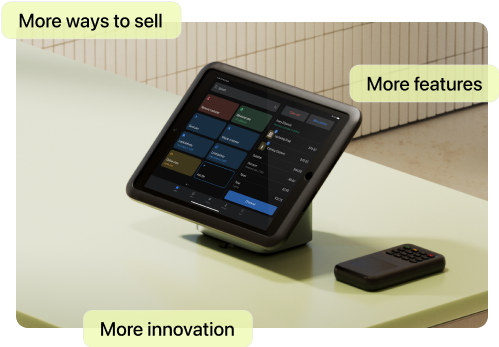Gift baskets may seem like a modern trend, but they’ve been around for thousands of years. Mourners left gift baskets for the dead in tombs in ancient Egypt, while worshippers in ancient Greece offered baskets filled with wine and olive oil to the gods. Gift baskets in ancient India and China often carried vegetables, food, and tea for the recipients.
The tradition continues today, and the opportunity is massive. In 2024, the market size for food gifting in the US was estimated to be $42 billion, with a projected average growth of 5.2% per year through 2028. Whether you’re looking to turn your passion for curating beautiful gifts into profit or add a new revenue stream to your existing business, starting a gift basket business could be your path to entrepreneurial success. Here’s how to capture a slice of this market by starting a gift basket business.
What is a gift basket business?
A gift basket business involves selling curated packages of goods in a specific niche or for a target audience. While traditionally presented in a basket, modern food gifting brands also offer gift boxes or other inventive formats, like an edible bouquet. While customers often buy such baskets to give as gifts, some also buy them as a way to treat themselves or try new products.
Some gift basket businesses offer both one-time gifts as well as a subscription model, where customers get a new box delivered on a regular cadence, such as monthly, bimonthly, or quarterly. For example, online sparkling wine brand The Sip sells both one-off gift boxes and memberships.

How to start a gift basket business
- Select your products
- Name your business
- Register your business
- Write a business plan
- Develop a pricing strategy
- Purchase your initial inventory
- Build a website
- Develop a marketing plan
Making money by selling gift baskets is similar to starting any business. You’ll need to figure out what you want to sell and carefully plan out your budget, product pricing, and marketing. With a little hard work, you can have a thriving gift basket business.
1. Select your products
Whether you’re starting a gift basket business from scratch or building it as an additional revenue stream for your established business, the first step is to curate your product selection.
If you have an existing business selling food products like spices, jams, cheeses, chocolate, international snacks—or anything else, really—you can create bundles of your bestselling items. Gift baskets can even mix in non-edible items that are thematically related.
If you’re starting from scratch, brainstorm a theme for your gift basket offerings that reflects your unique expertise or interests. Some common but creative gift box ideas include:
-
Baby gift boxes, like these from Nikki’s Gift Baskets
-
Wine gift boxes, like these from The Sip
-
Coffee gift boxes, like these from Ithaca Coffee Company
-
Candy gift boxes, like these from Savannah’s Candy Kitchen
-
Fruit gift baskets, like these from Good4You
-
Candles gift baskets, like these from Prosperity Candle
-
Snack gift boxes, like these from Bokksu
-
Sympathy and get well gift boxes, like these from Happy Hygge Gift

These are just a few ideas to get you started. To really stand out in the market, come up with a spin on a theme that is ownable—meaning unique to you and rooted in something special about your experience or expertise.
For example, Bokksu’s founder Danny Taing’s gift box idea sprang from his experience living in Japan and bringing home a suitcase full of snacks to share with friends and family.
2. Name your business
Next comes a fun part: naming your business. You can keep it simple and use your own name, or think up something a little more catchy. If you’re stuck, Shopify’s gift basket business name generator can get your creative juices flowing.
Once you’ve landed on a name you love, double-check that it’s not already in use by searching the United States Patent and Trademark Office as well as your relevant state business registry, if applicable.
Finally, make sure the business name you love is also available as a website domain. Ideally, your website URL should match your business name. If the domain isn’t available, you could consider a close variation or look for a different top-level domain.
3. Register your business
Next, decide how you want to structure your gift basket business. The most common business structures include:
-
Sole proprietorship: This is the default business structure for single-owner businesses. However, this type of business is unincorporated, meaning there is no legal separation between you and the business, and the business’s liabilities are your own.
-
General partnership: You and a partner go in on a business together. This structure is also unincorporated.
-
Limited liability company (LLC): This structure is incorporated, meaning it establishes the business as a separate entity. It’s also a pass-through entity, meaning it’s taxed the same as a sole proprietorship or partnership, unless you elect otherwise.
-
C corporation: C corporations are more complex and get taxed twice, but they make it easier to raise money by selling shares.
If you’re not sure which way to go, reaching out to an attorney or tax adviser can be helpful. Once you’ve decided on a business structure, the next step is to register your business with the relevant Secretary of State office. You may have to fill out paperwork, obtain a business license (if your state or municipality requires one), get an employer identification number (EIN), and appoint a registered agent.
4. Write a business plan
Your business plan is your roadmap to a successful business and details key points on how you’ll operate and make money. The length and depth of your plan can vary depending on your exact needs, such as whether you’re using it to seek funding or apply for a loan. Here are a few steps you’ll generally want to follow when writing your plan:
-
Summarize your business: You should already know your concept, but go deeper by considering the value you want to provide to consumers and clearly outline it in your business plan.
-
Conduct a market analysis: Check out your competitors to see what they’re offering and charging so you can find a way to set yourself apart.
-
Detail your product line: Narrow down the exact products you want to sell, determining what will go in each basket.
-
Nail down your organizational processes: If you’ll have employees, define their roles and responsibilities in the production process. If you won’t, you can still outline your production processes to hold yourself accountable and maximize efficiency.
-
Make basic projections: Make an initial financial projection of income and expenses based on the sales you expect to make and the cost to make each basket. Consider the cost of goods, labor to make the baskets (even if the labor is your own), and shipping and delivery.
-
Figure out if you need funding: Starting your own gift basket business will take some capital, so determine if you have enough in savings or if you’ll need to obtain business financing from outside sources.
5. Develop a pricing strategy
There are several pricing strategies you can use to price your gift baskets:
-
Cost-plus pricing: Calculate your total production costs, then add a fixed percentage to create your selling price.
-
Value-based pricing: Set your prices based on how much customers believe a product or service is worth. This approach often works best for premium or very trendy offerings, where buying it could enhance the customer’s self-image.
-
Competitive pricing: Use your competitors’ prices as a benchmark, with the aim of winning customers for whom price is a key differentiator.
You can also consider corporate pricing for customers buying your baskets in large quantities. For example, companies may buy all of their employees gift baskets for the holidays. Offering a 10% or 15% discount in exchange for a guaranteed jump in sales may be worth it.
6. Purchase your initial inventory
When sourcing the products for your gift basket store, look to wholesalers and distributors, such as Shopify Collective. To control startup costs, you can start small and buy more once orders start rolling in. If this will be a home-based business and you don’t have a commercial space, make sure your supplies will fit in a spare room or whatever storage you have available.
Don’t forget about the auxiliaries you need to get your baskets out the door, such as:
-
Gift presentation materials, like baskets, boxes, tissue, ribbon, and anything else you need to create the finished basket. You can have special packaging for common gifting occasions such as birthdays and holidays, like Savannah Candy Kitchen’s occasion boxes
-
Packaging and shipping supplies, like boxes, tape, and shipping labels

7. Build a website
One of the most important steps for your new business is creating your website. You’ll need an ecommerce store that lets you list your products, adjust pricing with ease, and deliver a satisfying checkout experience.
With Shopify, you can bring your vision to life, even if you’re not a web design pro. Choose from more than 250 themes and use customization tools to make it your own. Add features like search and filtering, currency calculations, and product recommendations, to make the experience seamless for your customers. Once your website is up and running, Shopify converts customers up to 36% better than the competition, helping you get more sales without any extra effort.
Keep your website updated with your latest offerings so that your customers always know what’s available and what isn’t.
8. Develop a marketing plan
A good way to start marketing is by creating social media accounts where you can post content and videos related to your gift baskets. You can even sell your products directly on social platforms like TikTok, Facebook, Instagram, and Pinterest using Shopify. For example, a Bokksu Instagram Reel demonstrates how to use the products in the Japanese tea gift box, allowing you to purchase the showcased items by clicking on the video.
To grow your audience, consider partnering with other local brands for a combined offering. Brand collaborations can build your credibility and give you access to your partner brand’s following, and vice versa. You can build a custom gift basket in partnership with another food brand, featuring their products, or develop a custom product together.
How to start a gift basket business FAQ
Do you need a license to sell gift baskets?
Whether or not you need a license depends on what you’re selling and where you live. If you’re selling fresh food or alcoholic beverages as part of your baskets, there’s a good chance you’ll need extra licensing. Each state has its own regulations to follow, so be sure to do your research.
How much does it cost to start a gift basket business?
It all depends on the type of baskets you’re selling, how much product you buy upfront, and whether or not you’re hiring staff or renting a warehouse. Selling gift baskets with low-cost, easy-to-ship items will have fewer startup costs than selling expensive or heavy items.
Are gifting businesses profitable?
Yes, selling gift baskets can be very profitable. The market size for food gifting in the US was estimated to be $42 billion in 2024, with a projected average growth of 5.2% per year through 2028.
How do I find customers for my gift basket business?
Start by building an online presence and creating content tailored to your audience. You can build an audience on Instagram and TikTok, post in relevant Reddit threads or Facebook groups to get more people interested, and ask your friends to share your website. You might also start selling your gift baskets at local community events or trade shows to spread the word in person.







